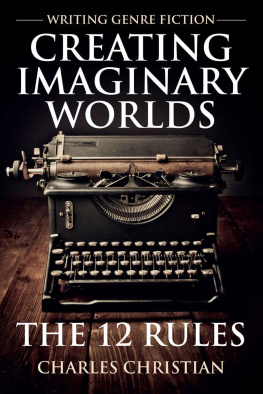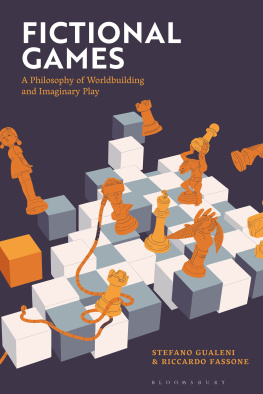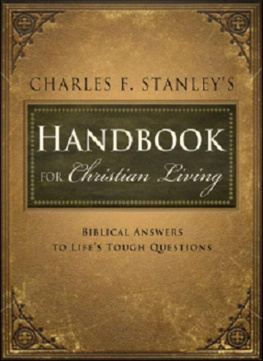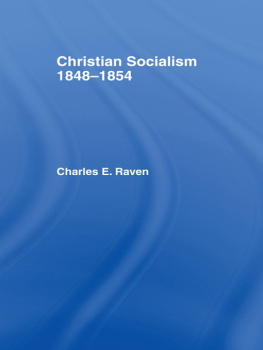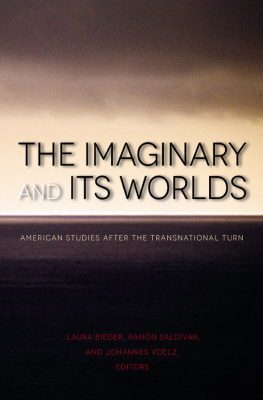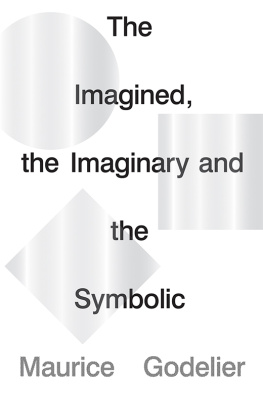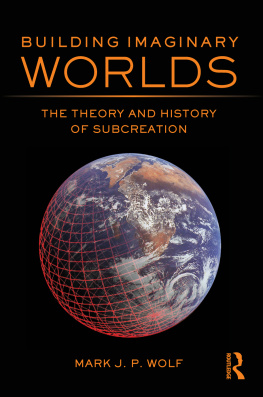Charles Christian - Creating Imaginary Worlds: The 12 Rules
Here you can read online Charles Christian - Creating Imaginary Worlds: The 12 Rules full text of the book (entire story) in english for free. Download pdf and epub, get meaning, cover and reviews about this ebook. year: 0, genre: Art. Description of the work, (preface) as well as reviews are available. Best literature library LitArk.com created for fans of good reading and offers a wide selection of genres:
Romance novel
Science fiction
Adventure
Detective
Science
History
Home and family
Prose
Art
Politics
Computer
Non-fiction
Religion
Business
Children
Humor
Choose a favorite category and find really read worthwhile books. Enjoy immersion in the world of imagination, feel the emotions of the characters or learn something new for yourself, make an fascinating discovery.
- Book:Creating Imaginary Worlds: The 12 Rules
- Author:
- Genre:
- Year:0
- Rating:5 / 5
- Favourites:Add to favourites
- Your mark:
- 100
- 1
- 2
- 3
- 4
- 5
Creating Imaginary Worlds: The 12 Rules: summary, description and annotation
We offer to read an annotation, description, summary or preface (depends on what the author of the book "Creating Imaginary Worlds: The 12 Rules" wrote himself). If you haven't found the necessary information about the book — write in the comments, we will try to find it.
Creating Imaginary Worlds: The 12 Rules — read online for free the complete book (whole text) full work
Below is the text of the book, divided by pages. System saving the place of the last page read, allows you to conveniently read the book "Creating Imaginary Worlds: The 12 Rules" online for free, without having to search again every time where you left off. Put a bookmark, and you can go to the page where you finished reading at any time.
Font size:
Interval:
Bookmark:
Creating imaginary worlds - The 12 Rules
Charles Christian

Charles Christian is a professional writer, editor, award-winning journalist and former Reuters correspondent.
His latest science fiction and fantasy books are This is the Quickest Way Down: 13 Sci-Fi, Horror and Urban Fantasy Stories which was long-listed for three national and international book awards, Secret Cargo (2013) and Tomorrows Ghosts (2014). His latest non-fiction book is A Travel Guide to Yorkshires Weird Wolds: The Mysterious Wold Newton Triangle. His work, both fiction and poetry, have been selected for anthologies and collections in the UK and US.
Christian also devised Ink Sweat and Tears taking it from zero to the most widely-read poetry site within four years and has compiled, edited and published one haiku and three poetry anthologies.
He has published books and written for legal, medical, insurance and financial markets, is a barrister and the founder/publisher/editor of Legal IT Insider, the legal IT industrys leading news resource.
In 2012 he started his own SF&F blog, Urban Fantasist, the speculative fiction genre where the weird meets the mundane in a what if... world that is almost (but only almost) normal. It has grown quickly and has now expanded to cover sci fi, fantasy, paranormal and horror. www.urbanfantasist.com
Urban Fantasist is regularly updated with news, images, ideas, apparitions, images, weird stuff and now - NEW! - showcases selected fresh SF&F fiction and poetry - free to readers. (There are paid opportunities for authors published - contact Charles Christian for more details: ).
CREATING IMAGINARY WORLDS
THE 12 RULES
Published by Urban Fantasist
Oak Lodge, Darrow Green Road, Denton, Harleston, Norfolk IP20 0AY, UK
ISBN: 978-1-907043-07-9
Copyright Charles Christian 2014
The right of Charles Christian to be identified as the author of this work has been asserted by him in accordance with the Copyright, Designs and Patents Act 1988.
All rights reserved. No part of this publication may be reproduced, stored in or introduced into a retrieval system, or transmitted, in any form, or by any means (electronic, mechanical, photocopying, recording or otherwise) without the prior written permission of the publisher/author. Any person who does any unauthorised act in relation to this publication may be liable to criminal prosecution and civil claims for damages.
This book is sold subject to the condition that it shall not, by way of trade or otherwise, be lent, re-sold, hired out or otherwise circulated without the publishers/authors prior consent in any form of binding or cover other than that in which it is published and without a similar condition including this condition being imposed on the subsequent purchaser.
For Jane who makes everything groovy.
This book was born out of a talk I gave to the Reading Writers group in the South of England. I said Id write up my notes for them but then began to have so much fun with the project that I decided to turn it into something longer that would appeal to both writers and readers.
What fascinates me about this subject is the way genre fiction seems to have so many unwritten rules, conventions, tips and trips. Although you may not be consciously aware of them when you are reading a story, if they are absent or deliberately flouted, they can destroy a storys credibility and alienate the readers sympathy and patience.
So hopefully you will enjoy this short guide or what Sherlock Holmes, a resident of one of the most memorable imaginary worlds ever created, would describe as a trifling monograph, and see how many Ah, yes moments of recognition you can spot.
...Charles Christian
It is all too easy to get carried away (and, in some instances, obsessed) with the trappings of an imaginary world the physical setting, the gadgets, the clothes people wear, the things they say, even the colour of the wallpaper in their houses and in the process overlook that these are only one aspect of a storys broader picture.
To create a credible world you must also have
- strong, credible characters
and
- a solid, credible plot or story arc
Avoid wooden clothes peg characters
The science fiction, fantasy and horror (SFF&H) genres are one of the greatest culprits when it comes to breaking this rule. Authors all too often focus way too much attention on the minutiae of, say, how the Roman Empire would operate if it were still in existence today, or how communities would exist in floating castles, or how an advanced civilisation could create Dyson Spheres (for good Dyson Sphere-type stories, read Larry Nivens Ringworld books) that they overlook the fact their characters display all the personality of wooden clothes pegs and that the plotting is so weak the reader has worked out the denouement by page 5 and given up on the story by page 6.
In its most extreme form, this can become a veritable brain dump with the author filling a book with excessive detail, not so much to pad out the story but apparently to show off the depth of research they have carried out. Thanks to the internet, this phenomenon is sadly on the increase.
Yes, by all means you need to have a Big Idea, the high-concept narrative what if scenario that nobody else has ever tried before. We all get a little thrill of excitement when we encounter totally new ideas but the key is not to stop there.
People and society not just hard science
Joe Haldemans 1974 sci-fi classic The Forever War has at its core the theory of space-time dilation and the high-concept of what if the protagonist William Mandella only ages a few subjective years while in space whereas over a thousand years have elapsed back on Earth. Interesting but no cigar. What transforms this book into a classic is its exploration of Mandellas alienation from the rest of mankind, as Earth society evolves in directions that are incomprehensible to his late 20th century mind. And (and there is always an and) Mandella is also a sympathetic character with whom he reader can empathise, not a gung-ho Rambo.
It is the same with the James Blish Cities in Flight series from the 1950s. What if somebody invented an anti-gravity device (called the Spindizzy drive) that allowed entire cities to lift off from Earth and travel through space? Now you have to admit that New York City, complete with the Chrysler and Empire State buildings, transformed into a giant spaceship makes for impressive imagery but if that was all there was to the tale, it would make an intriguing short story but never enough to fill four full-length novels as Blish managed.
But, once again these are also people stories. The hard science is there but so too is the characterisation and the political and social commentary. In fact the first novel in the series They Shall Have Stars can be read as a critique of the McCarthyist paranoia that was rampant in the United States in the late 1940s and early 1950s.
As we shall see further along in this guide, you must have the appropriate trappings to make an imaginary world credible but you must also have strong, credible characterisation and a solid, credible story arc.
RULE #1 SUMMARY
- Create a good high-concept narrative what if scenario that will intrigue readers
Font size:
Interval:
Bookmark:
Similar books «Creating Imaginary Worlds: The 12 Rules»
Look at similar books to Creating Imaginary Worlds: The 12 Rules. We have selected literature similar in name and meaning in the hope of providing readers with more options to find new, interesting, not yet read works.
Discussion, reviews of the book Creating Imaginary Worlds: The 12 Rules and just readers' own opinions. Leave your comments, write what you think about the work, its meaning or the main characters. Specify what exactly you liked and what you didn't like, and why you think so.

